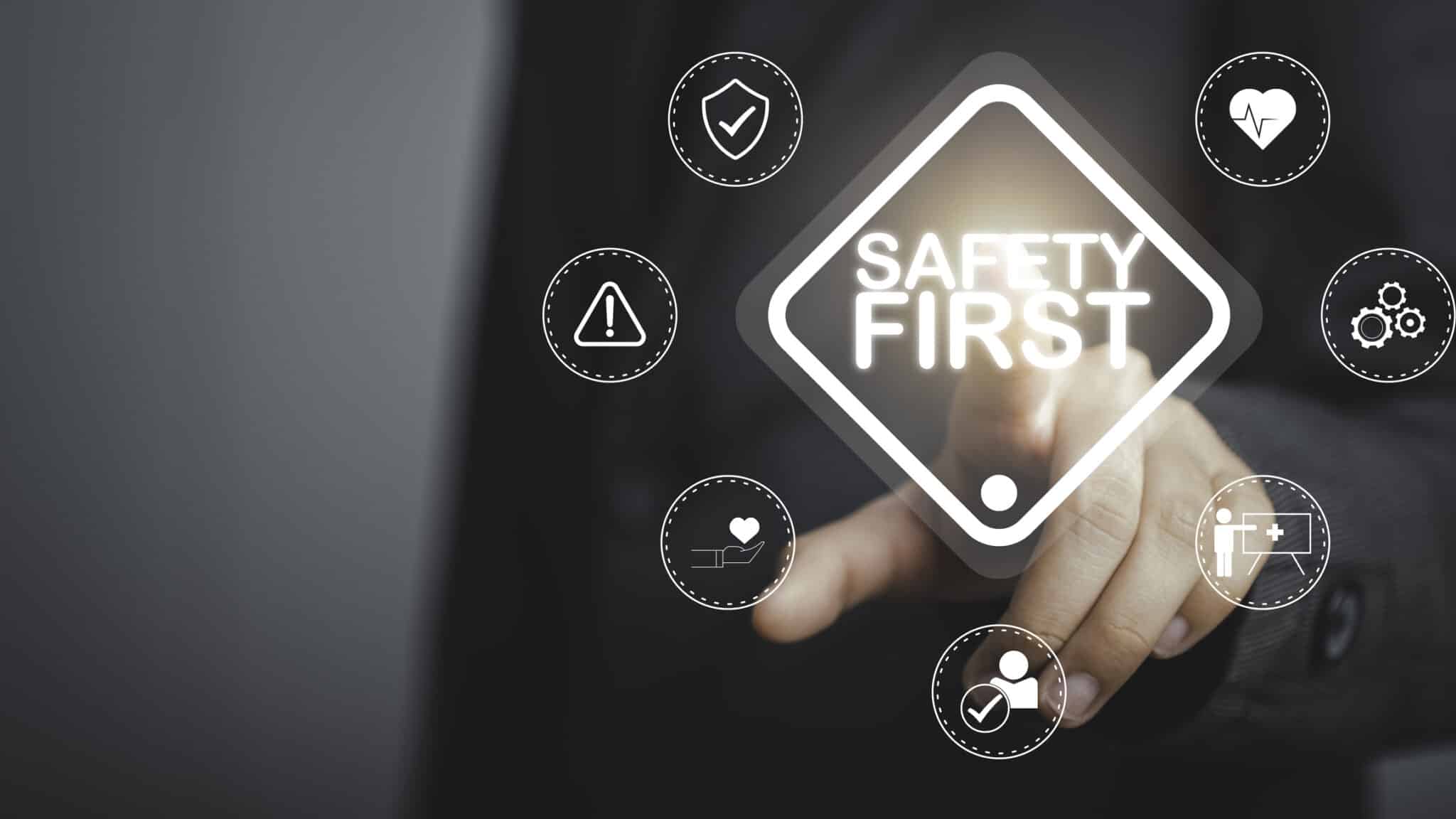Electromagnetic interference (EMI) can disrupt devices like Wi-Fi, TVs, and even security systems. In tech-heavy homes, EMI is a growing concern. Here’s how to protect your home:
- Rearrange Devices: Keep devices that emit strong signals, like routers and microwaves, away from each other.
- Use Shielded Cables: Replace standard cables with shielded ones to block external signals.
- Maintain Distance: Keep electronic devices away from large appliances and metal objects.
- Install EMI Filters: Add filters to power lines to reduce noise.
- Upgrade Grounding: Ensure your home’s electrical system is properly grounded to dissipate EMI safely.
For thorough EMI protection, consider hiring a professional like Mister Sparky of Charleston, SC, to assess and enhance your setup. Contact us today for a safer, interference-free home!

Are your home devices acting up for no apparent reason? Electromagnetic interference (EMI) might be to blame. In today’s tech-filled homes, from Charleston to Mt. Pleasant and James Island, EMI can disrupt everything from your Wi-Fi connection to your TV signal.
But don’t worry—protecting your home from these invisible disturbances is easier than you think. This guide will walk you through the basics of EMI, how to spot it, and the best strategies to keep your home and devices running smoothly.
How to Protect Your Home from Electromagnetic Interference
The culprit could be electromagnetic interference (EMI), an often overlooked issue that can wreak havoc on your home’s electronics and even affect your health.
In areas like Charleston, Mt. Pleasant, and James Island, where modern homes are packed with electronic devices, understanding and protecting against EMI is becoming increasingly important. Let’s dive into what electromagnetic interference is and how you can safeguard your home from its effects.
Understanding Electromagnetic Interference (EMI)
What is Electromagnetic Interference?
Electromagnetic interference, or EMI, is a disturbance generated by external sources that affect the electrical circuits in your home. Imagine a radio station playing loud static over your favorite song—EMI works similarly but with your home’s electronics.
These disturbances can come from various sources, both inside and outside your home, and can lead to malfunctions in devices like your TV, computer, or even your Wi-Fi network. Understanding what EMI is and how it works is the first step in protecting your home from its disruptive effects.
Common Sources of EMI in Homes
EMI can come from many common household items you might not expect. For example, kitchen appliances like microwaves and refrigerators are notorious for creating interference.
Even your home’s wiring, especially if it’s outdated or damaged, can be a source. External sources like nearby power lines or broadcasting towers can also introduce EMI into your home. By knowing where EMI is coming from, you can start to take steps to minimize its impact on your everyday life.
How EMI Affects Your Home and Devices
The effects of EMI in your home can range from mildly annoying to seriously disruptive. You might notice static on your TV, slow internet speeds, or strange noises coming from your speakers. In more severe cases, EMI can cause complete device malfunctions or data loss.
This interference can also affect more critical systems like home security alarms or medical devices, posing safety risks. Recognizing these signs early can help you address and mitigate EMI before it causes significant issues.
Why EMI is a Growing Concern in Modern Homes
As our homes become more filled with smart devices and wireless technology, the potential for EMI increases. In areas like Charleston, where homes are both modernizing and dealing with various external sources of interference, understanding EMI is more important than ever.
The growing reliance on wireless signals and the proximity of multiple electronic devices can create a perfect storm for EMI. By being proactive about EMI protection, you can ensure that your home remains a safe and efficient environment.
Identifying EMI in Your Home
Signs of Electromagnetic Interference
Spotting electromagnetic interference in your home isn’t always straightforward, but there are telltale signs you can watch for. If you’ve noticed flickering lights, static on your TV or radio, or sudden drops in your Wi-Fi signal, EMI could be the cause.
Other subtle signs include buzzing sounds from speakers or unexplained issues with smart home devices. These disruptions may seem minor at first, but they can indicate more significant underlying problems with electromagnetic interference affecting your home.
Tools to Detect EMI
Identifying EMI accurately often requires specific tools. Devices like spectrum analyzers and EMF meters can help you detect the presence and strength of electromagnetic interference in your home.
These tools can pinpoint the sources of EMI, whether it’s from a faulty appliance or an external source like nearby power lines.
While some of these tools are available for home use, it might be worth consulting a professional if you suspect widespread or severe EMI issues.
Common Areas in Your Home Susceptible to EMI
Certain areas in your home are more vulnerable to EMI than others. Kitchens and home offices are common hotspots due to the high concentration of electronic devices. Bedrooms with many plugged-in gadgets or home entertainment systems can also be susceptible.
Even your garage, if equipped with electric tools, can be a source of EMI. Identifying these key areas will help you focus your efforts on protecting the most vulnerable parts of your home from electromagnetic interference.

Basic Tips to Reduce EMI in Your Home
Rearranging Electronic Devices
One of the simplest ways to reduce electromagnetic interference in your home is by rearranging your electronic devices. Keeping devices that emit strong signals, like routers and microwaves, away from each other can help minimize interference.
For instance, avoid placing your Wi-Fi router near your television or cordless phone, as these devices can clash and cause connectivity issues.
By creating more distance between your electronics, you reduce the chances of them interfering with each other and maintain smoother operation throughout your home.
Using Shielded Cables and Wiring
Another effective method to combat EMI is by using shielded cables and wiring. These specially designed cables are wrapped in a protective layer that blocks external electromagnetic signals from interfering with the signals traveling through the cable.
Whether it’s your home entertainment system or your computer setup, replacing standard cables with shielded ones can significantly reduce the amount of EMI in your home. This is especially important in homes with outdated wiring, as older systems are more prone to interference.
Keeping Devices at a Distance
Maintaining proper distance between your devices is another key strategy in reducing EMI. For example, placing your Wi-Fi router in a central, open location, away from walls and large metal objects, can help ensure a strong, uninterrupted signal.
Similarly, keeping large appliances like refrigerators or air conditioners away from your home office or entertainment center can prevent these devices from causing signal disruptions.
By thoughtfully placing your electronics, you can minimize the risk of EMI without needing any advanced equipment.
Reducing Wireless Signals Interference
Wireless signals are particularly susceptible to EMI, especially in homes filled with devices that communicate over Wi-Fi, Bluetooth, and other wireless networks.
To reduce this type of interference, consider switching to wired connections where possible, like using Ethernet cables for the internet instead of relying solely on Wi-Fi.
Additionally, managing the number of devices connected to your wireless network and updating your router’s firmware can help keep wireless interference in check, ensuring smoother operation of all your connected devices.
Advanced Strategies for EMI Protection
Installing EMI Filters on Power Lines
For more robust protection against electromagnetic interference, consider installing EMI filters on your power lines. These filters are designed to block or reduce the electromagnetic noise that travels through your home’s electrical system.
By filtering out unwanted interference, these devices help ensure that your appliances and electronics receive a cleaner power supply, which can improve their performance and longevity.
While this is a more advanced solution, it’s particularly useful in homes with severe EMI issues or in areas with a lot of external interference.
Using EMI Shielding Paints and Materials
If you’re looking for a comprehensive way to shield your home from EMI, using EMI shielding paints and materials can be an effective strategy. These paints contain conductive materials that create a barrier against electromagnetic fields.
You can apply them to walls, ceilings, and even floors to create a protected environment. This method is often used in sensitive areas like home offices or media rooms, where reducing interference is crucial.
Additionally, specialized shielding fabrics or films can be used for windows and doors, further enhancing the EMI protection of your space.
Setting Up a Faraday Cage for Critical Areas
For those who need to protect specific areas from EMI, setting up a Faraday cage is an advanced but effective solution. A Faraday cage is an enclosure made from conductive materials that blocks external electromagnetic fields.
You can build a Faraday cage around essential areas like your home office or around critical equipment like servers or home security systems.
This method ensures that the equipment inside the cage remains unaffected by external EMI, providing a high level of protection for your most important devices.
Using Surge Protectors with EMI/RFI Filtering
Surge protectors are a common household item, but not all are created equal. For better protection against EMI, look for surge protectors that include EMI/RFI (radio-frequency interference) filtering.
These surge protection not only protect your devices from power surges but also filter out the electromagnetic noise that can interfere with your electronics.
Using these specialized surge protectors in key areas like your entertainment center, home office, or kitchen can help maintain smooth operation and prolong the life of your devices.
The Role of Electrical Grounding in EMI Protection
Importance of Proper Grounding
Proper electrical grounding is essential for protecting your home from electromagnetic interference. Grounding provides a safe path for excess electrical energy, including EMI, to dissipate into the earth, reducing the risk of interference with your home’s electronics.
Without adequate grounding, your devices are more susceptible to disturbances, which can lead to malfunctions or even damage.
Ensuring that your home’s electrical system is properly grounded is a fundamental step in EMI protection and overall electrical safety.
How to Check for Proper Grounding in Your Home
Checking for proper grounding in your home is something you can do on your own or with the help of a professional. Start by inspecting your home’s main electrical panel; look for a grounding rod connected to a copper wire leading from the panel into the ground.
You can also use a multimeter to test the grounding system’s effectiveness. However, if you’re unsure about the condition or setup of your grounding system, it’s best to consult with a licensed electrician.
They can perform a thorough inspection and make any necessary upgrades to ensure your home is properly grounded.
Upgrading Grounding Systems to Reduce EMI
If your home’s grounding system is outdated or insufficient, upgrading it can significantly reduce the impact of EMI. This might involve installing additional grounding rods, upgrading wiring, or implementing more advanced grounding techniques.
In some cases, improving the grounding system may require rewiring parts of your home, especially if the existing wiring is old or damaged.
Upgrading your grounding system is a worthwhile investment, as it not only protects against EMI but also enhances the overall safety and efficiency of your electrical system.

The Impact of EMI on Health and Safety
Potential Health Risks Linked to EMI
Electromagnetic interference isn’t just a nuisance for your devices; it may also pose health risks. While research is ongoing, some studies suggest that prolonged exposure to high levels of EMI could contribute to symptoms like headaches, fatigue, and even sleep disturbances.
For those with electromagnetic hypersensitivity (EHS), the effects can be more pronounced, causing discomfort in environments with high EMI levels.
Although the scientific community is still debating the extent of these risks, it’s wise to reduce EMI in your home as a precautionary measure, especially if you or your family are experiencing unexplained health issues.
How EMI Affects Home Security Systems
EMI can also have serious implications for your home’s security. Interference can disrupt the signals in wireless security systems, causing false alarms or, worse, preventing alarms from triggering when they should.
Additionally, EMI can affect the performance of surveillance cameras, door sensors, and other security devices, leaving your home vulnerable to intrusions.
Ensuring that your security systems are protected against EMI is crucial for maintaining their reliability and keeping your home safe.
Ensuring Safety with EMI Reduction Techniques
To protect both your health and your home’s safety, it’s essential to implement EMI reduction techniques. Simple steps like rearranging devices and using shielded cables can go a long way in minimizing EMI.
For more significant concerns, consider advanced solutions like installing EMI filters and upgrading your home’s grounding system.
By taking these precautions, you can create a safer living environment, free from the disruptive and potentially harmful effects of electromagnetic interference.
DIY vs. Professional EMI Protection: What You Need to Know
Risks of Attempting EMI Protection on Your Own
Taking on electromagnetic interference protection as a DIY project can be tempting, especially if you enjoy tackling home improvements.
However, there are significant risks involved. Without proper knowledge and tools, you might overlook critical aspects of EMI protection, leading to incomplete or ineffective solutions.
For instance, misjudging the source of interference or improperly installing shielding materials could exacerbate the problem.
How Professional Services Ensure Complete EMI Shielding
Hiring a professional to handle your home’s EMI protection ensures that the job is done thoroughly and safely.
Professionals have the expertise to accurately diagnose the sources of EMI and recommend the most effective solutions, whether that involves installing filters, upgrading grounding systems, or applying shielding materials.
They also have access to advanced tools that can detect and measure EMI more precisely than standard consumer equipment.
Ready to Shield Your Home from EMI?
Don’t let electromagnetic interference disrupt your home’s comfort and safety. If you’re in Charleston, Mt. Pleasant, or James Island, Mister Sparky of Charleston, SC is here to help.
Our expert electricians are equipped to protect your home from EMI, ensuring your devices run smoothly and your family stays safe. Contact us today to schedule your EMI assessment and take the first step toward a disturbance-free home!
Electromagnetic Interference FAQs
What are the most common sources of electromagnetic interference in homes?
Common sources of electromagnetic interference (EMI) in homes include household appliances like microwaves, refrigerators, and even older light fixtures. Wi-Fi routers, cordless phones, and other wireless devices can also generate EMI. External sources such as nearby power lines or radio towers may contribute to interference as well.
Can Electromagnetic Interference affect my health?
While the health effects of Electromagnetic Interference are still being studied, some people report symptoms like headaches, fatigue, and sleep disturbances when exposed to high levels of electromagnetic interference. Reducing Electromagnetic Interference in your home is a good precaution, especially if you or your family are experiencing unexplained health issues.
How can I detect EMI in my home?
To detect EMI in your home, you can use tools like EMF meters or spectrum analyzers, which measure electromagnetic fields and interference. Common signs of EMI include static on your TV or radio, Wi-Fi disruptions, and unexplained issues with electronic devices.
Is it better to handle EMI protection on my own or hire a professional?
While some basic EMI protection measures can be handled on your own, hiring a professional ensures that the job is done thoroughly and safely. Professionals have the tools and expertise to accurately diagnose and mitigate EMI, providing more comprehensive protection.
How often should I check and maintain my home’s EMI protection?
It’s a good idea to check and maintain your home’s EMI protection regularly, at least once a year, or whenever you notice performance issues with your devices. Regular maintenance helps ensure that your EMI protections remain effective and adapt to any changes in your home environment.






